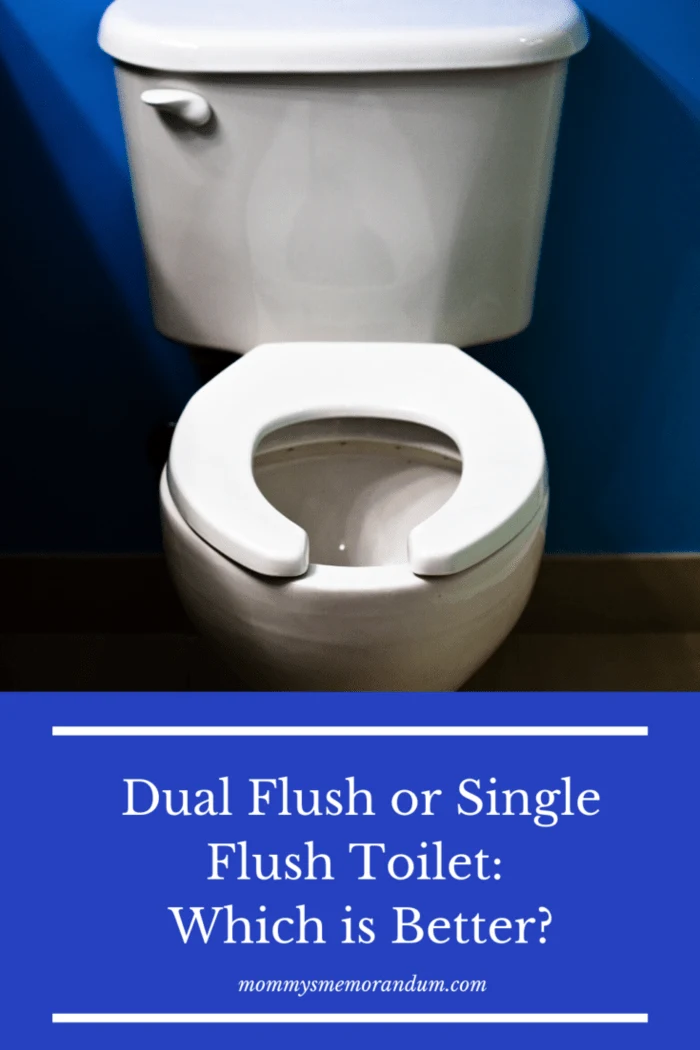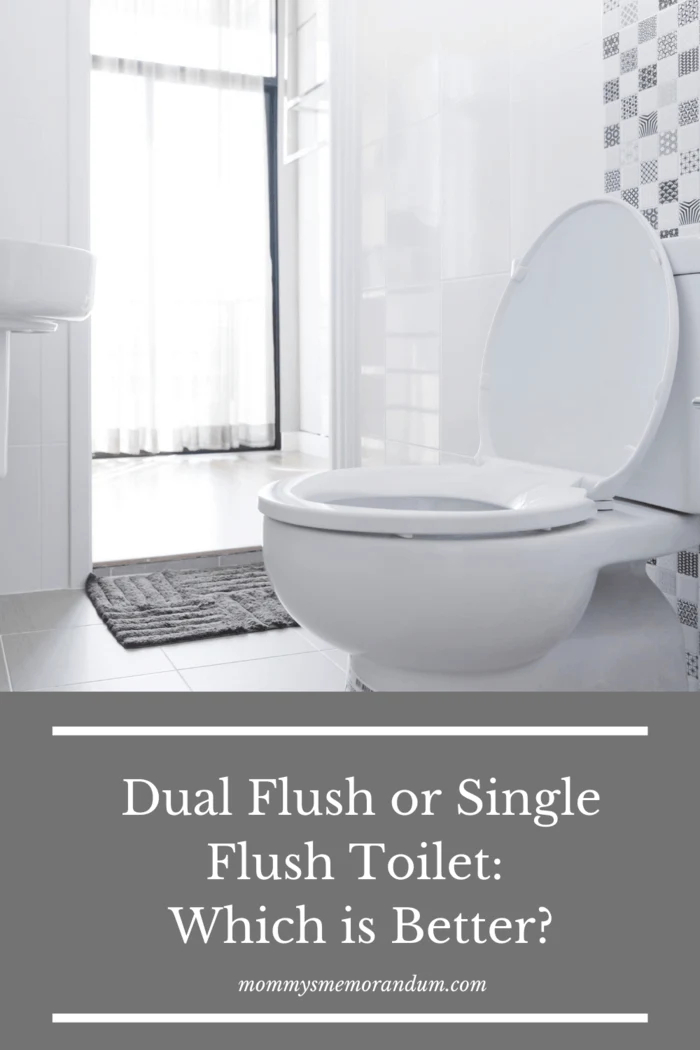We are quickly adapting to the newfound solutions that not only solve our everyday problems but make life easier.
Some of these innovative technologies are sustainable alternatives to inefficient solutions found in old bathrooms.
A popular energy-efficient solution is to install the best dual flush toilet.
However, is it a better alternative to a single flush toilet?
Is there any conclusive evidence that dual flush toilets are better?
Let’s compare the two and see which one is more beneficial.

Which is Better: Single or Dual Flush Toilets?
Both single and dual flush toilets have their advantages and disadvantages, and choosing between the two ultimately depends on your personal preferences and priorities.
Single flush toilets are typically less expensive and easier to operate since there is only one button or lever to use. They are also generally more reliable since there are fewer parts that can malfunction. However, they tend to use more water, since they have a fixed amount of water that is used for every flush, regardless of the waste being flushed.
On the other hand, dual flush toilets are more expensive and can be more complicated to operate, since they have two buttons or levers that need to be used correctly. However, they are generally more water-efficient, since they have two different flush options – a low-volume flush for liquid waste and a high-volume flush for solid waste. This allows for a more customized and efficient use of water, which can save you money on your water bill and reduce your environmental impact.
In general, if you are looking for a more budget-friendly and simple option, a single flush toilet may be the way to go. However, if you are looking for a more environmentally friendly and water-efficient option that can save you money in the long run, a dual flush toilet may be the better choice.

Single Flush Toilet
Some advantages of a single flush toilet include:
- Simplicity: Single flush toilets have a straightforward design, with only one flushing mechanism, which makes them easy to use and maintain.
- Cost-effective: Single flush toilets are generally less expensive to purchase and install than dual flush toilets, which can be an important factor if you’re on a tight budget.
- More powerful: Single flush toilets tend to have a stronger and more forceful flush than dual flush toilets, which can be better at clearing waste and preventing clogs.
- Fewer parts to maintain: Single flush toilets have fewer parts and mechanisms than dual flush toilets, which can make them more reliable and less prone to breakdowns.
- Suitable for all types of waste: Since single flush toilets use the same amount of water for every flush, they can effectively handle all types of waste, including liquid and solid waste.
It’s important to note, however, that single flush toilets are generally less water-efficient than dual flush toilets, which can lead to higher water bills and increased environmental impact over time.

What Are Some Cons of a Single Flush Toilet?
Some disadvantages of a single flush toilet include:
- Water inefficiency: Single flush toilets use the same amount of water for every flush, regardless of the amount of waste being flushed. This can lead to unnecessary water waste, which can result in higher water bills and negative environmental impact.
- Limited flushing options: Single flush toilets do not have the option to choose between different flush volumes, which can be inconvenient and wasteful if you only need a small amount of water to flush away liquid waste.
- Higher risk of clogging: Single flush toilets tend to have a more powerful flush, which can increase the risk of clogging and require more frequent cleaning and maintenance.
- Not environmentally friendly: Since single flush toilets use more water per flush, they are not as environmentally friendly as dual flush toilets, which can lead to a higher carbon footprint.
- Higher water bills: The higher water usage of single flush toilets can result in higher water bills, especially in areas with high water rates.
Overall, while single flush toilets are a simple and reliable option, their water inefficiency and limited flushing options make them less environmentally friendly and potentially more costly over time.
Dual Flush Toilet
Some advantages of a dual flush toilet include:
- Water efficiency: Dual flush toilets use significantly less water than single flush toilets because they offer two flush options – a low-volume flush for liquid waste and a high-volume flush for solid waste. This can result in significant water savings and a lower environmental impact says Home Advisor.
- Customizable flushing options: The two flush options in a dual flush toilet allow for a more customized and efficient use of water, which can save you money on your water bill and reduce water waste.
- Eco-friendly: Dual flush toilets are more environmentally friendly than single flush toilets, as they use less water, reduce strain on water resources, and help lower the carbon footprint.
- Long-term cost savings: While dual flush toilets may be more expensive upfront, the water savings can add up over time, potentially leading to significant cost savings on your water bill.
- Reduced risk of clogging: Dual flush toilets generally have a lower risk of clogging than single flush toilets since the low-volume flush is suitable for liquid waste and can help prevent blockages.
Overall, the water efficiency and customizable flushing options of dual flush toilets make them an eco-friendly and cost-effective option in the long run.

Disadvantages of Dual Flush Toilets
Some disadvantages of dual flush toilets include:
- Higher initial cost: Dual flush toilets are generally more expensive to purchase and install than single flush toilets, which can be a barrier for some consumers.
- Complexity: Dual flush toilets can be more complicated to operate than single flush toilets, with two buttons or levers that need to be used correctly. This can be confusing for some users, especially children and elderly people.
- More maintenance: Dual flush toilets have more moving parts than single flush toilets, which can increase the likelihood of breakdowns and require more maintenance over time.
- Increased risk of clogging: While dual flush toilets have a lower risk of clogging than single flush toilets, they can still be prone to blockages, particularly if the low-volume flush option is overused.
- Limited flushing power: The low-volume flush option in a dual flush toilet may not be powerful enough to remove all waste, particularly for larger solid waste, which may require additional flushing.
Overall, while dual flush toilets offer significant water savings and eco-friendly benefits, they can be more complicated and expensive to install and maintain, and may not be suitable for all users or waste types.
What is the Final Verdict?
So, which is better? Single or Dual flush toilets?
A dual-flush toilet is a modern, more popular, and reasonable choice to make if you’re looking to turn your home into a smart one and more eco-friendly.
The best dual flush toilet is only an environmentally-conscious decision away from being installed in our bathrooms and transforming our everyday lives.
It’s only a matter of time before people adapt to the dual flush toilet.
Their water-conserving technology is a definite step forward in providing eco-friendly solutions to combating water wastage and reducing the overall cost of water usage.
